July 17, 2024
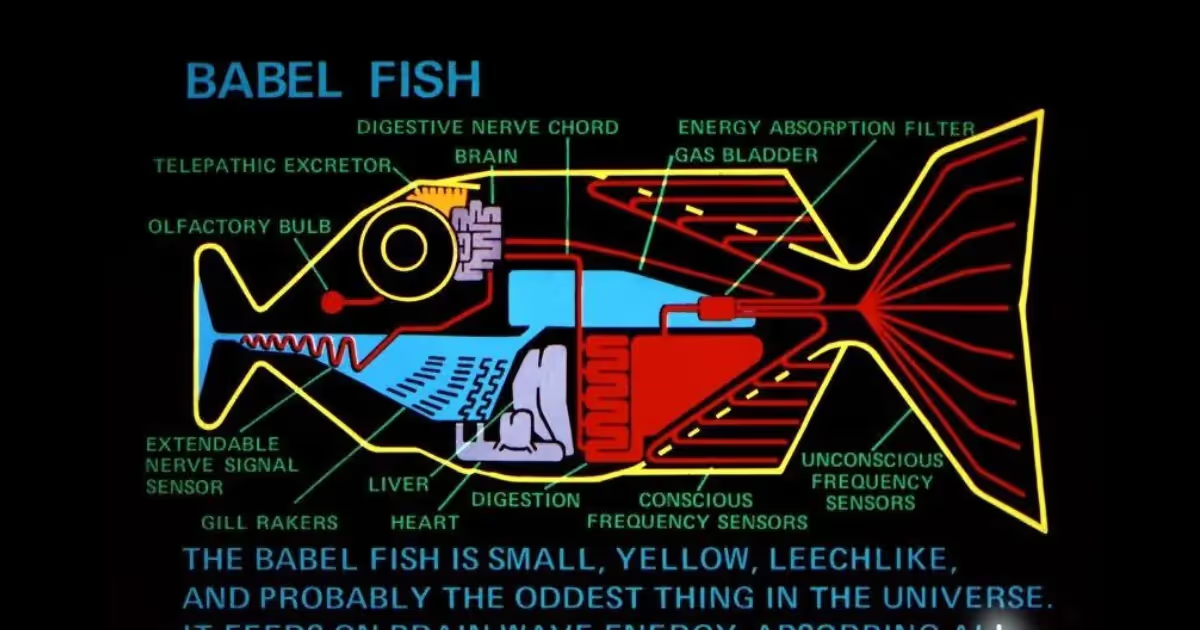
Most of the scientific technology we use today was not in fact first conceived by scientists.
In reality, most of the technology we take for granted and use on a daily basis originated among the wild concepts of filmmakers and writers—in science fiction stories, movies, and TV shows.
In this way, independent filmmakers are pioneers of the future more than people would expect or give them credit for.
Of course, people will always laugh at their strange ideas and tell us “that will never happen”. Like those crazy handheld communication devices in Star Trek…
Science Fiction Becomes Reality: What New Concepts Will Your Film Include?
If you are looking at the sci-fi or future/dystopian genres for your next film project, then it is important to think about the technology that will be involved in that setting and how it could completely change the environment for those citizens of the future.
For example, if everyone uses flying cars, would there still be a traditional road network visible at all? These are the sorts of questions that need to be asked to ensure the audience is brought along with the illusion and fully immersed in the story, especially if it will be a classic that foretells real future tech.
Get a Sci-fi Setup for Your Filmmaking Business
As a means of inspiration, we have compiled the top 10 most realistic tech in sci-fi films and TV shows—so realistic they became reality.
We also show how you can have your own sci-fi setup for your filmmaking business, making your daily tasks feel like operating the controls of the Millennium Falcon.
10) Humanoid Robots: IRobot, 2004
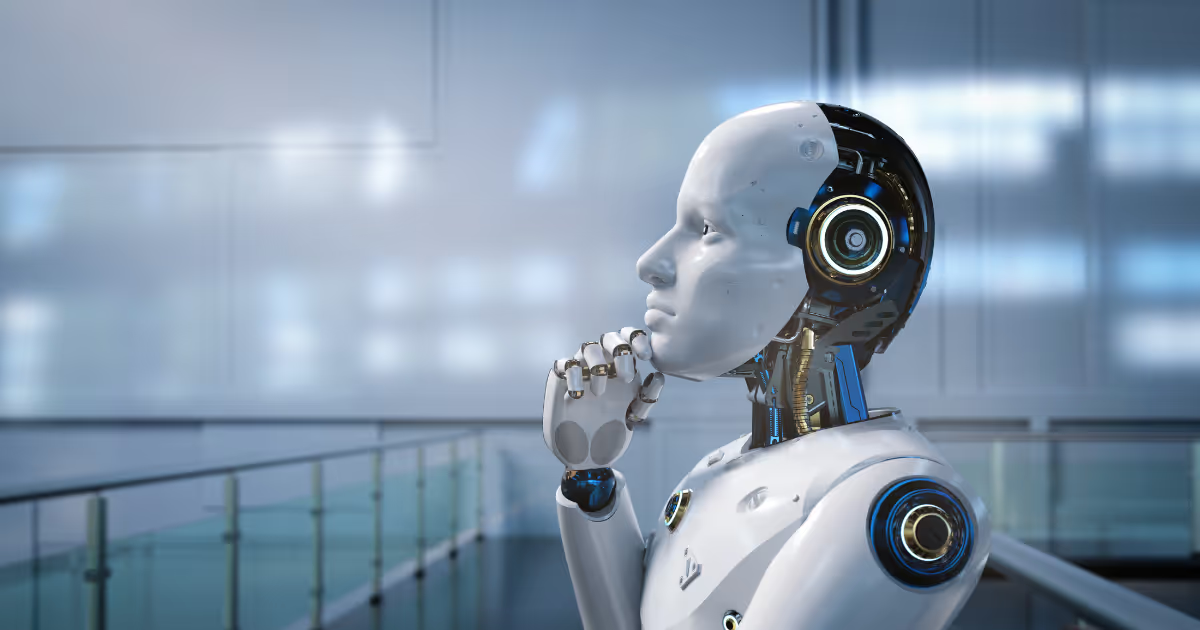
In some ways, the visionaries of the 50s and 60s up until now have been let down somewhat by our lack of humanoid robots in everyday life.
In sci-fi films, they always had a little robot helper following them around and doing their chores.
Isaac Asimov was really the godfather of robots and for someone born in 1920, was incredibly accurate with his predictions of not only robots but also things like automated cars and even ticket machines at train stations that are now commonplace.
Asimov's laws of robotics are so well thought out that they should perhaps be incorporated into modern-day artificial intelligence-based programs.
The film IRobot was based on the Asimov short story collection of the same name and features a realistic imagining of how robot helpers could be commonplace and what could happen when things go wrong.
9) Lifelike Domestic Service Androids: Humans, 2015

The Channel 4 series Humans also depicts a brilliant portrayal of human robots, although in this case illustrated with talented acting to get the smooth unnatural movements just right, as opposed to big-budget special effects.
When Will We See Humanoid Androids Helping Out in our Homes and Places of Work?
The short answer—next year, in 2025—if the claims of Elon Musk are to be believed. He expects to have humanoid robot workers in Tesla factories very soon.
If the recent Spacex launches are anything to go off, however, there's a good chance they will accidentally destroy the human race, then afterwards claim that's what the test was supposed to achieve and it was all a success.
Another classic sci-fi concept in development by Musk that is seen in films such as Deadly Friend, Intelligence, and Jonny Mnemonic, is the old microchip in the brain to enhance our thought processes and improve intellect.
Tests have already begun on the first human recipient of the Neuralink Chip—and if that doesn't sound like the headline in a sci-fi movie then what more do you want?
8) Virtual Reality: World on a Wire, 1973; Tron, 1982

The concept of virtual reality was first seen on screen in the 1973 film, World on a Wire where an artificial world is filled with inhabitants who believe it is real—based on the 1964 novel Simulacron-3 by Daniel F Galouye.
Possibly the most memorable instance of virtual reality headsets that are willingly operated by the user is in the 1982 classic TRON, where a software programmer enters the computer world to defeat the enemy programs that have gone rogue (possibly because they were made by Microsoft, although this was not explored in the film itself).
The early 80s were a good era for fantastic special effects that were way ahead of their time, such as The Terminator in 1984, and in this respect, Tron was certainly groundbreaking.
When you see the impressive visual effects of 2D graphics layered over back-lit animation and live action, you would be forgiven for thinking this was the product of years of experience in the industry.
Tron was, however, the very first film of its kind to use CGI throughout the production.
You'd imagine of course that it would have won loads of awards for the graphics at the time but Tron was actually disqualified from the Best Visual Effects category in the Academy Awards.
At the time it was viewed that using computer graphics for the effects was a bit like cheating.
7) Babel Fish: The Hitchhiker's Guide to the Galaxy, 1978

The Hitchhiker's Guide to the Galaxy features some brilliant technology including Marvin the Paranoid Android - the ship's robot suffering from depression and severe boredom - and advanced towels, to name a few.
One of the more useful technologies in The Hitchhiker's Guide to the Galaxy was in fact an organic being, a small leech-like creature known as the Babel Fish. When placed in the ear it converts brainwaves and sounds so that the user can translate the language from any species and understand what they are saying.
There are currently several products on the market that perform the same function as the Babel Fish in Hitchhiker's Guide to the Galaxy, such as the Timekettle WT2 edge translator and the X1 AI interpreter hub.
6) Tricorder: Star Trek series, 1966
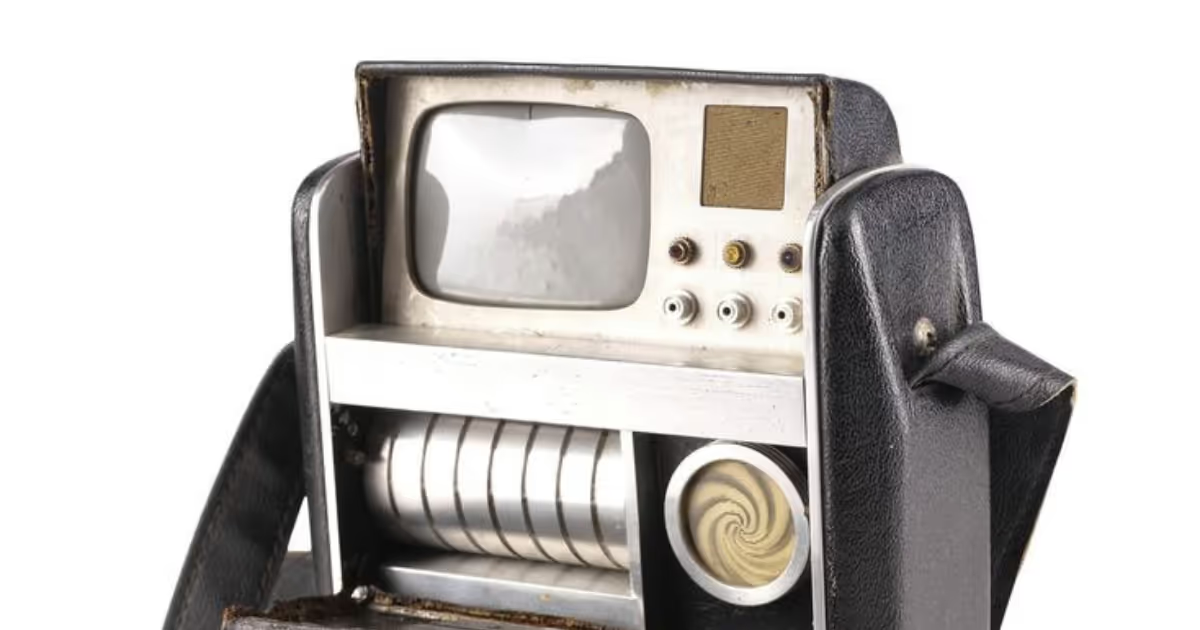
“The tricorder is a multifunctional hand-held device that can perform environmental scans, data recording, and data analysis; hence the word "tricorder" to refer to the three functions of sensing, recording, and computing.”—Wikipedia.
Of course, now everybody has a multifunctional recording and computing device in their hand that can make sense of the environment around them, and there's a good chance this text is being read on a device such as this.
The only thing missing from this fictional device that would have made it exactly like a modern-day smartphone is the communication element.
5) Communicator: Star Trek series, 1966
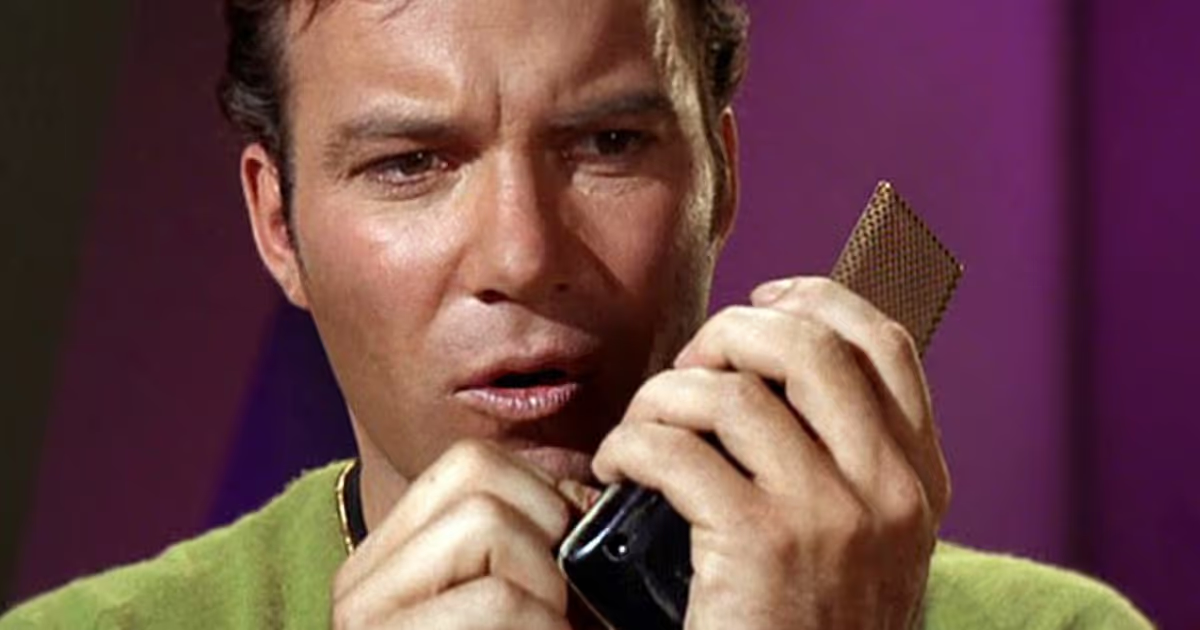
The other half of the equation was included in the Star Trek series although as a separate device. If they had combined both the communicator flip phones with the tricorder computing device, they would have devised a concept more or less exactly the same as a current smartphone.
Most devices and equipment in the 60s would really only perform one specific task so it would be more or less unthinkable to imagine those two high-tech inventions combined into one product.
This illustrates how it is important not to let our current day thinking and understanding of the real world impact too greatly on the fictional world we create. Would there be a simpler and better way around it, given the level of technology we are imagining our characters in the future will possess?
For convincing and believable science fiction it is necessary to think about how one fictional invention would affect the others in that same world.
4) Powered Exoskeleton: Aliens, 1986

It is a brilliant scene at the end of Aliens where Ripley fights off the alien queen with the help of a powered exoskeleton.
Excellent foresight and this type of human-worn lifting equipment have started being used in construction and heavy industry.
However, would you need a powered exoskeleton for human workers in a world inhabited by lifelike human androids, or would you just get them to do all the heavy lifting with maybe some beefed-up arms?
If the androids can hold a lengthy philosophical discussion and even betray their human shipmates such as in the case of Bishop, moving box A into column B probably wouldn't be too much of a stretch for them.
This slight contradiction aside, the future tech in Aliens and the original Alien was some of the most gritty and realistic-looking equipment in a film of its kind, especially during the 70s when a cheesier and cleaner, more naive vision of the future was more common.
In Alien, everything—from the consoles the crew used to the outfits they wore—had a lived-in feel to them. Rather than being slick and shiny, they were grimy as if being used regularly over many years in space, lending to the overall feel of truckers in space that the director Ridley Scott wanted to get across.
3) ED-209 Automated Defence/Law Enforcement: Robocop, 1987
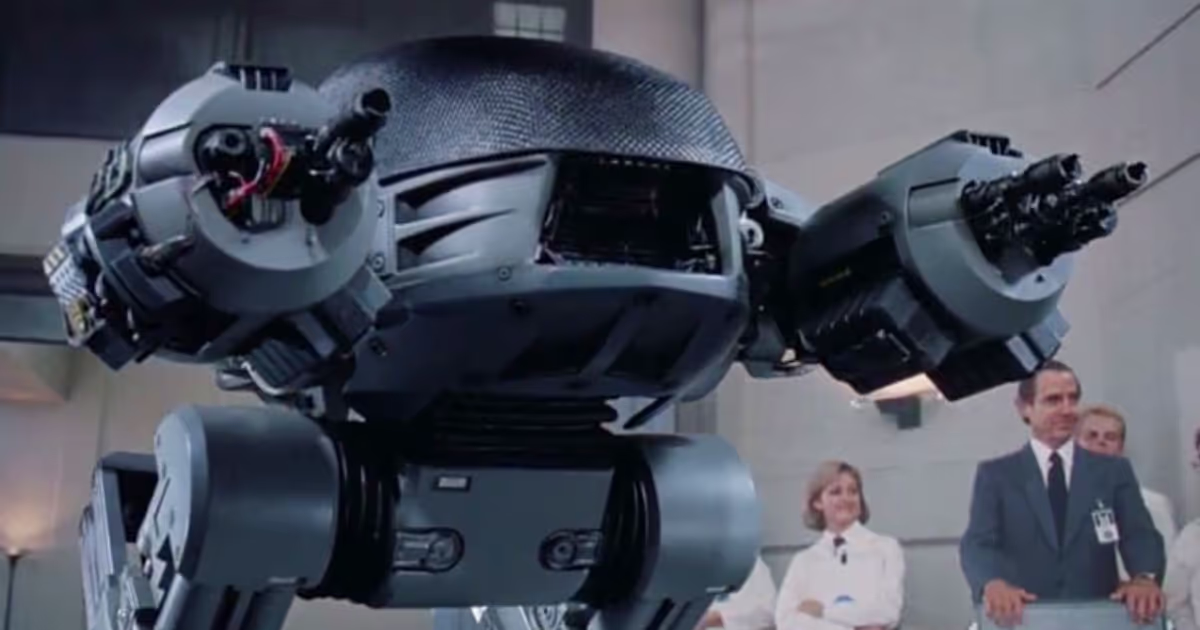
You can forget about your modern-day M3gan's and other deliberately sinister-looking robots from our current era of film, the baddie in Robocop, the rival law enforcement system ED209 was definitely the scariest robot ever envisioned in film.
The stop motion animation with a scale model manipulated into position for each frame lends the character of the ED209 robot a sickening and unnatural smoothness to it that is both menacing and horrifying.
The scene in which it is introduced is especially traumatic with the juxtaposition of the corporate setting counting down to the inevitable bloodbath when the programming doesn't quite work as it should. “Just a few bugs in the system, we'll iron those out.” says Dick Jones with a steaming bullet-ridden corpse of their former colleague in the background, still trying to push for the contract.
In this scene, the filmmakers do a good job of making the point that incredible new technology could lead to catastrophic disasters when a lack of human oversight is combined with corporate greed.
Automated Defence Drones Currently in Development
In Ukraine, they are currently testing on the battlefield swarms of aerial and ground-based drones that will work together to identify and eliminate targets.
There is, however, a distinct ethical issue in allowing AI to make decisions that would bring about the end of human life in this way.
Samuel Bendett, Adjunct Senior Fellow at the Center for a New American Security, said “AI drone control systems would likely need a human in the loop to prevent the system from making errors in target selection.”
2) Telescreen: CCTV Security Systems, 1984 by George Orwell
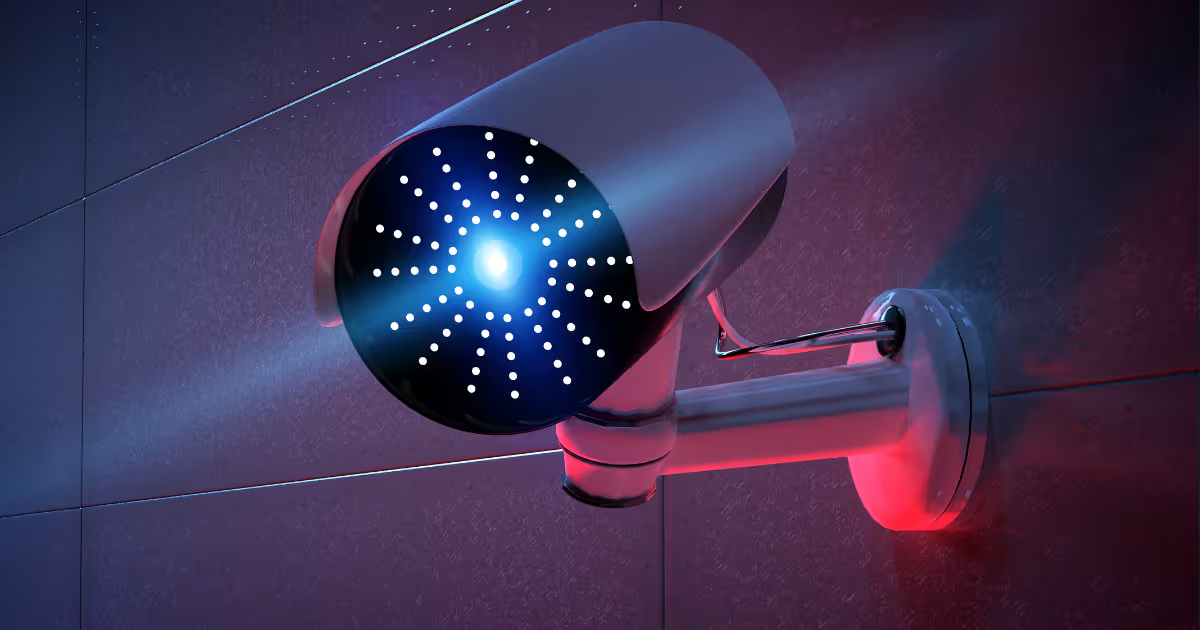
In George Orwell's 1984 novel set in a dystopian future, there is a device known as a telescreen in every household that not only shows the citizens' propaganda materials in the way of a television but also listens into their conversations and spies on them with audio and visual recordings to ensure they are behaving themselves.
In the UK, there is approximately one CCTV camera for every four people, or one per family if you look at it that way, as in the George Orwell novel.
This is more CCTV cameras per capita than even in communist China, where you could imagine the Government would be reasonably authoritarian.
1) Skynet - Automated Defensive Systems: The Terminator, 1984
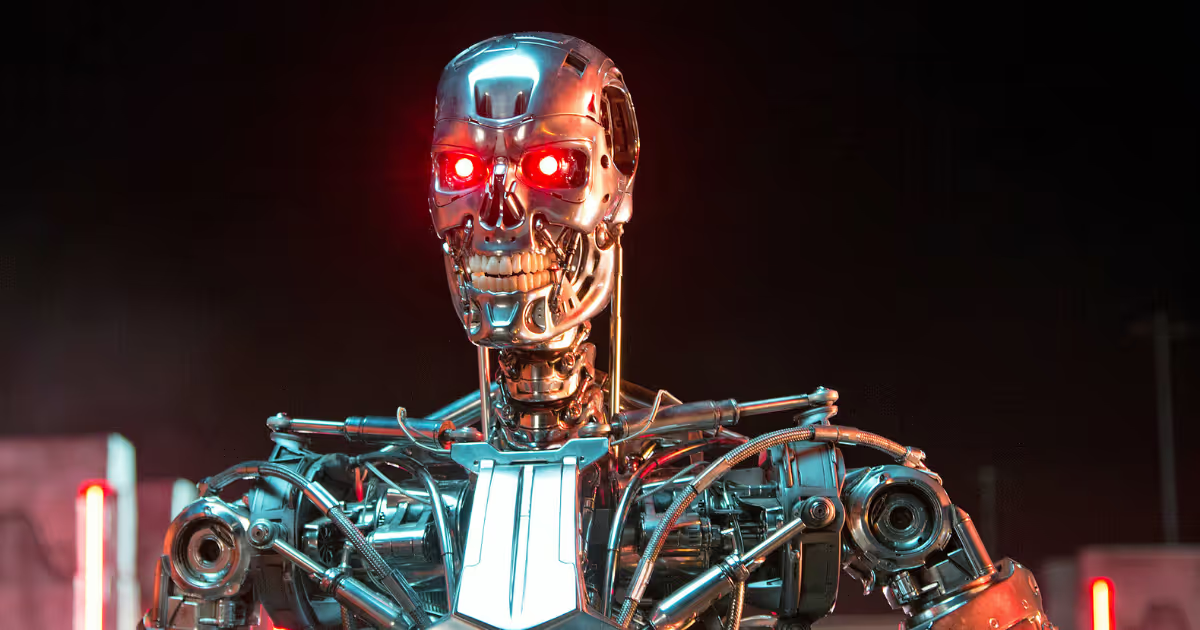
The Terminator was easily the best sci-fi film if not the best film in general.
It's got everything: brilliant plot, groundbreaking effects, unforgettable characters, Arnold Schwarzenegger, amazing action scenes, stunts and some top-notch performances in terms of acting.
The Terminator was another film to use stop motion animation and the sinister, unreal quality it gives to the movements of the Terminator robot is perfect for this setting, scarier than any modern-day CGI effects and a testament to the skill and dedication of the brilliant animators and their painstaking work in bringing the terminator to life.
Whilst being an 80s Arnie action film, The Terminator is also one of the most thought-provoking films of all time. The paradox of the plot is both mind-bending and completely logical, creating a perfect cyclical storyline that exists in a loop. There is no real end to the narrative as it continues to restart itself forever until infinity.
Again, for an 80s arnie flick, The Terminator is exceptionally prophetic in that it has predicted the struggles and the issues we are grappling with today, some 40 years later as we wrestle with the idea of the machines becoming better than ourselves.
“It's Like Bloody Skynet”
The word Skynet has almost become a generic term referring to the overreaching powers of any data-gathering or AI-based system.
The technology was so realistic and well thought out in The Terminator that almost everything included in the film has come to fruition.
Hunter-killer aerial drones—these are already in use in current conflicts. There is usually a human in the loop to authorise the shot but this could easily be removed from the process.
Ground-based terminator robots that can identify and kill humans—yes, we have those now, just about.
Advanced missile defence systems that are fully automated—check, we have seen those in recent conflicts, for example, the Iron Dome system in use in Israel.
Computer-based systems make judgements on humans that affect their lives significantly—think about the recent post office scandal and how the data on the computer put people in prison, despite the protests of innocence from the humans that the erroneous data related to.
AI is also used in criminal justice to provide risk assessments of individuals to help with sentencing and bail decisions. Courtroom AI can help judges make informed decisions by analysing the legal data for them.
The philosophical question that The Terminator storyline throws up is—when the machines are better than us and don't need us anymore, how will they view human life and what would be the logical thing to do with such an unruly and troublesome lower-level species such as the human race?
Does Top Tech Need a Top-end Budget?
Of course, films such as The Terminator and Alien feature big-budget special effects but do you necessarily need the biggest budget to showcase the best technology in your film?
As some of these examples show, futuristic technology can be portrayed with acting talent alone, as with the Humans series. In some cases, there is no physical representation at all, as with the Babel Fish in Hitchhiker's Guide to the Galaxy. Sometimes the idea is enough in itself.
As all of these sci-fi concepts have ultimately been invented and become part of our daily lives, it is clear the role that filmmakers can play in shaping the future of humankind.
So think carefully about the tech you include in your film—in fifty years time, it could be roaming the streets!
Top 5 Computers in Film and Television
When it comes to including computer systems within your independent film, these are some of the top examples from the sci-fi genre to draw inspiration from
5 - Millennium Falcon Navigation Computer (L3-37)---Star Wars
4 - The Data Vault—Rogue One
3 - Mother—the data centre on the USCSS Nostromo in Alien
2 - HAL 9000 —the sentient AI computer from Stanley Kubrick's 1968 film 2001: A Space Odyssey
1 - Holly—the brilliant ship's computer in Red Dwarf played by Norman Lovett and later Hattie Hayridge
Get a "Sci-fi Setup" for Your Filmmaking Business
When making a sci-fi production it's important to get the technology right—in the narrative of the film itself and in terms of the real-life technology used to produce the film and manage the business effectively.
Is it possible to get a sci-fi setup for your filmmaking business, so that it feels more like operating the Millennium Falcon rather than facing off against the Death Star?
At Lyon, we provide cutting-edge technology to filmmaking businesses so that they can operate their business in an efficient and streamlined process, with powerful computing capability at their fingertips.
This means that instead of being an arduous and cumbersome task in the back office functions that would normally slow down the creative process, with Lyon, we provide the latest technological solutions to enhance creativity, allowing filmmakers to produce art they would never have been able to imagine previously.
By deploying any number of our state-of-the-art solutions, filmmakers can get a system for their business that feels like they have the best computers from the science fiction world all clubbing together to provide assistance.
With unlimited data storage from remote data centres, the Rogue One data vault can be yours. No more running out of space on hard drives and servers.
With virtual workstations, you can turn any device, such as a tablet or mobile phone, into a powerful data processing tool that would easily rival the Star Trek tricorder. Through remote access to high-end CPU platforms and virtual graphics processors, filmmakers can unleash a huge amount of processing capability at their fingertips, on any device, in any location.
Using Desktop as a Service and Infrastructure as a Service, filmmakers can work fully remote, whilst having access to their entire body of work wherever they need it.
Deploying cybersecurity software alone is a bit like using the failed ED209—they can't think outside the box (or walk downstairs).
At Lyon Tech, our fully managed cybersecurity solutions have more of the qualities of Robocop—high-end technology combined with critical thinking and judgement from highly trained and skilled operators. Our state-of-the-art systems have real people at the heart of them, dedicated security engineers, rapid response technicians, system analysts and support teams available 24/7.
With cloud-based solutions from Lyon, film business owners can connect together all the components of their business seamlessly into one integrated and streamlined operation that seems like operating the Mother datacentre aboard the Nostromo, compared to their previous methods.
Contact Lyon
If you are looking to get a sci-fi setup for your filmmaking business, contact our team today!
At Lyon Tech, we turn science fiction into reality for our customers in the film industry, providing a wide range of high-tech solutions along with the expertise of dedicated professionals.
If you are looking to improve your systems or shift towards a remote environment but are unsure which options would be most suitable, get in touch today and our friendly advisors can take you through which solutions would work best for your business.


